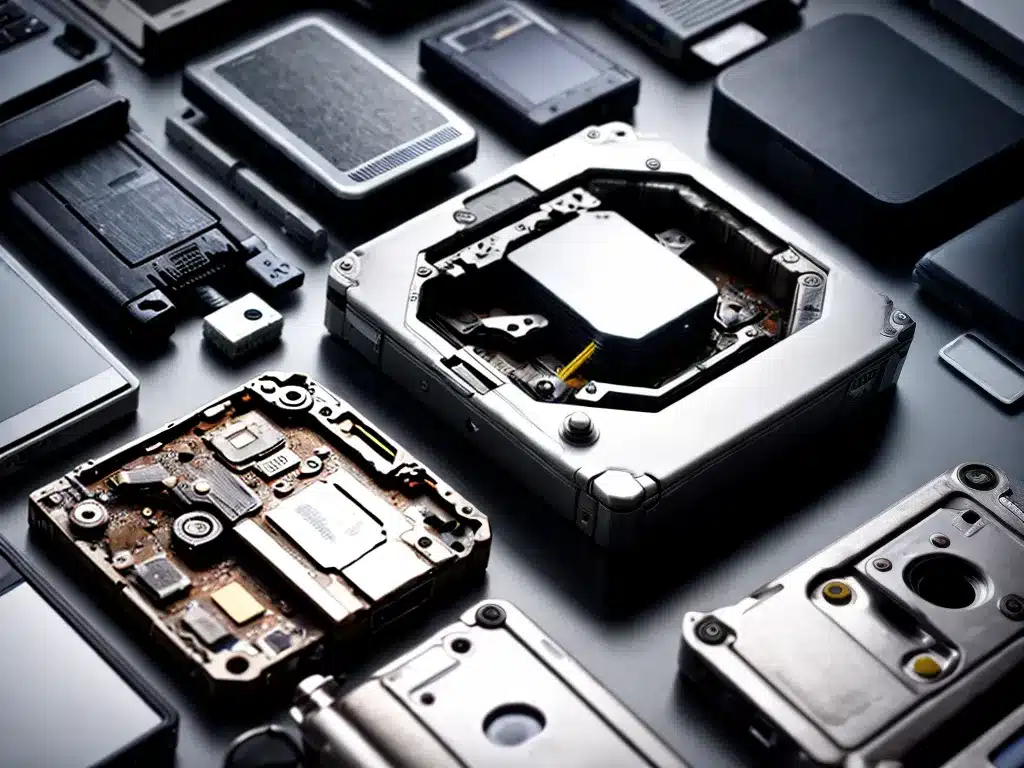
Data Destruction: How To Securely Wipe Data From Old Devices
Introduction
Data security is more important than ever in today’s digital world. When it’s time to get rid of an old smartphone, computer, or external hard drive, simply deleting files or reformatting the device isn’t enough to prevent sensitive information from being recovered. Proper data destruction is essential to avoid data breaches and identity theft when disposing of devices. This guide will walk through the steps I take to securely wipe data from old equipment before disposal or reuse.
Why Data Destruction Matters
Devices store a tremendous amount of sensitive data from emails, documents, account credentials, browsing history, and more. Simply deleting files or reformatting a device does not fully remove the underlying data. The files are merely marked as deleted rather than being overwritten. With the right forensic tools, someone could easily recover personal and corporate data from improperly sanitized devices.
Some examples of why complete data destruction is critical:
-
Prevent identity theft – Wiping personal data like social security numbers, bank accounts, and login credentials prevents criminals from accessing it if a device is lost, recycled, resold, or discarded.
-
Avoid regulatory fines – Data protection laws can impose heavy fines if personal data isn’t properly erased before disposal.
-
Protect company intellectual property – A company’s trade secrets, prototypes, client data, and other IP assets could be exposed if not thoroughly wiped.
-
Maintain customer trust – Customers lose confidence if their personal data is compromised due to improper sanitization procedures.
Secure Erase Methods
There are a few different methods I rely on to securely wipe data from old devices:
Software Data Erasure
-
Use a dedicated data erasure software to overwrite storage media with random data patterns multiple times. This software efficiently wipes all sectors/blocks of the storage device.
-
Software tools like
DBAN,Eraser,KillDisk, andActive@ KillDiskwork for both entire devices or individual files and folders. -
For sheer simplicity, I prefer using software erasure when possible. It’s faster and easier than physical destruction in many cases.
Physical Destruction
-
For ultimate assurance that no data can ever be recovered, physically destroying the storage media is an option.
-
Drilling holes through platters on traditional hard disk drives destroys them along with the data.
-
With solid state drives (SSDs), shredding or crushing the chips destroys data pathways.
-
Physical destruction is more time consuming and labor intensive than software wiping. It requires proper safety precautions as well.
Secure Erase Commands
-
Many devices today support a built-in secure erase command or format that cryptographically sanitizes all data.
-
For example, filling a drive with random data before partitioning or encrypting the entire disk.
-
This is the most integrated solution when supported on a device, though availability varies.
Best Practices
Follow these tips to help ensure proper data destruction across any device:
-
Identify sensitive data – Scan devices to understand where sensitive files or personally identifiable information resides before erasing.
-
Choose the right method – Match the wipe method to the device type, with software being the easiest option in most cases.
-
Verify erasure – Double check that the wipe process fully completed, with no errors or interrupted sections.
-
Destroy physical media when possible – For maximum protection, destroy physical media like SSD boards or HDD platters after erasing data.
-
Use a certificate of destruction – Have a certified third-party vendor provide documentation that erasure was completed according to regulatory standards.
-
Track wiped devices – Document details like make, model, and serial number to maintain accountability of erased devices.
Securely Erasing Different Devices
The exact steps to wipe specific devices may vary. Here are some tips when sanitizing common technologies:
Traditional Hard Disk Drives (HDDs)
-
Use
DBANto completely overwrite HDDs before reselling or recycling them. -
I recommend at least a 3-pass overwrite, but up to 35-passes for highly sensitive data.
-
Physically damage platters using a hammer or drill for total assurance.
Solid State Drives (SSDs)
-
Use
Eraseror a similar tool to overwrite all sectors of the SSD multiple times. -
Alternative to software, use a high power degaussing magnet to scramble data.
-
Last resort is physically destroying SSD boards and chips.
Smartphones
-
On iOS, use “Erase All Content and Settings” under the device reset settings.
-
For Android, choose “Factory Data Reset” in Settings or Recovery Mode.
-
Also wipe the microSD card separately if one is installed.
USB Flash Drives
-
Use
Active@ KillDiskto wipe flash drives before reusing or recycling them. -
Encrypting flash drives before initial usage provides added protection.
-
Destroying the physical media is an extra precaution when disposing.
Closing Thoughts
When getting rid of old laptops, mobile phones, or other equipment, it’s tempting to just delete files or perform a quick format. However, responsible data destruction requires more advanced methods to permanently sanitize all stored information. By understanding the various software, hardware, and physical techniques available, I can keep sensitive data out of the wrong hands, maintain compliance, and protect my own identity. Proper device wiping takes a bit more time and care, but it’s one of the most important things I can do when recycling electronics.












